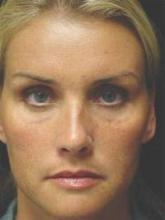NEW ORLEANS – Knowledge of skin anatomy and methods of proper pretreatment will enhance and extend the results of skin-resurfacing modalities, according to Dr. Suzan Obagi.
Skin resurfacing procedures continue to grow in popularity, and newer resurfacing modalities with less recovery time are regularly being introduced, Dr. Obagi said at the annual meeting of the American Academy of Cosmetic Surgery.
“Managing the skin properly by appropriately evaluating and treating it before, during, and after a skin resurfacing procedure will allow us to expand the base of patients we can treat safely, improve and maximize their results, and reduce complications,” she added.
The most common patient concerns are acne, wrinkles, pores, rosacea, facial redness, sensitive skin, and discoloration, said Dr. Obagi of the University of Pittsburgh.
“We hear about these issues all the time, so we need to know how to properly address them,” she noted. Discuss a range of procedures and the downtime associated with each modality when advising patients. “What patients do at home is equally – if not more – important than what is done in the office,” she stressed. “This puts some of the responsibility on them [patients]; we can only fix so much, but they have to be partners with us in this process.”
Aesthetic skin concerns can be treated with chemical peels, lasers, fillers, and skin-tightening procedures, but anyone performing surgery without first preparing the patient’s skin is doing the patient a disservice, Dr. Obagi stated.
Topical agents should be considered prior to other treatments, she advised. “A patient with excessive wrinkles will not achieve the desired result through a face-lift alone; I want to fix their skin first, and then do the face-lift if needed,” she noted. Similarly, skin problems such as rosacea and acne must be addressed before considering resurfacing modalities, as resurfacing skin that is actively inflamed will only exacerbate the issue, she said.
To maximize results from a skin-resurfacing modality, skin must be healthy before it is treated. “If you laser away just one brown spot, you’ll have a healthy spot of skin surrounded by a sea of sun damage,” said Dr. Obagi. Healthy skin heals faster and scars are less noticeable when sun damage is primarily addressed. This process serves as a test of patient compliance with instructions, she added.
The importance of topical agents in a preoperative skin care regimen cannot be overstated, she said. A retinoid should always be used to activate and stimulate keratinocytes and fibroblasts, and hydroquinone should be used to stimulate melanocytes. The use of hydroquinone is controversial, but claims regarding its carcinogenic properties have not been supported in the literature, said Dr. Obagi. “If you want to see results, become comfortable speaking to the safety of hydroquinone and using it properly in your patients,” she added. Mineral-based sunblock should take the place of a daily moisturizer, and a product containing zinc or titanium is recommended. “Many of us work under fluorescent light; even the visible spectrum of light interacts with tissue and causes some of the aging we’re seeing, and chemical sunscreens don’t touch that spectrum,” she stated. Finally, supportive topical agents such as AHAs, benzoyl peroxide, and astringents can be added as needed to a topical skin care regimen depending on a patient’s skin concerns.


